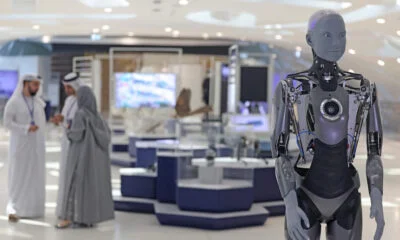News
Greek F-16 Fighter Jets Intercept Beirut-Bound MEA Flight
The Lebanese pilot is thought to have used an incorrect radio frequency — a major blunder from the son of the airline’s chairman.

A “Code Renegade” alert recently set Greek aviation authorities on high alert following a warning issued by a NATO air control center in Torrejón, Spain. Code Renegade is a distress signal typically used in a hijacking situation. In this case, the code was issued after a Middle Eastern Airlines (MEA) flight bound for Beirut failed to answer calls and went into complete radio silence.
After repeated attempts to speak to the aircraft’s captain, authorities began to worry about the plane’s safety status, which eventually caused Greek air defense to scramble two F-16 fighter jets from Souda to intercept the unresponsive civilian airliner over Argolida in the northeastern Peloponnese.

Lebanon-based aircraft tracker InterSky, took to Twitter to report the details of the unfolding situation:
“Code Renegade set Greek authorities on alert following a relevant signal by the NATO air control center in Spain (CAOC Torrejón), to intercept a non-responsive civil aircraft Airbus A321 with 145 passengers onboard that had taken off from Madrid and was bound for Beirut.”
Also Read: Emirates Airline To Invest $2 Billion On Major Upgrades
In a further twist to the story, contact was eventually reestablished with the aircraft, after which it was revealed that the MEA pilot, Abed Al-Hout, was the son of Mohammed Al-Hout, chairman of the board of directors of Middle East Airlines. The chairman has previously received criticism for employing relatives at various levels of the company, and in this instance, his son had failed to set the communication instruments to the correct frequency, resulting in radio silence.
The news is a further embarrassing blow for Middle East Airlines, which has recently lost over 20% of staff to other airlines, as Lebanon’s financial crisis continues to deepen.
News
Mamo Completes $3.4M Funding Round To Enhance Fintech Services
The startup will use the influx of cash to expand into Saudi Arabia and across the wider GCC while improving its product offering.

UAE-based fintech Mamo has announced the completion of a $3.4 million funding round that will help the startup extend its market presence and improve its product offering. Investors included 4DX Ventures, the Dubai Future District Fund and Cyfr Capital.
Mamo’s platform offers “payment collection, corporate cards and expense management” to help small and medium-sized businesses consolidate and streamline their operations. With the latest influx of capital, Mamo will further develop its comprehensive suite of services and begin testing its product lines in Saudi Arabia, further extending its footprint across the GCC.
Imad Gharazeddine, co-founder and CEO of Mamo, stated: “We’ve been in the market for a while now and are incredibly proud of what our team has achieved. The holistic and expansive nature of our product offering has helped us continue to grow sustainably. This additional funding will allow us to reach our medium-term goals even faster. The support from new and existing investors is a testament to our strong expertise and the ability to deliver on our customer promise”.
Daniel Marlo, General Partner of lead investor 4DX Ventures, added: “We have immense trust in Imad’s vision, leadership and Mamo’s innovative approach to provide a user-friendly and comprehensive financial solution for SMEs that makes financial management more accessible and efficient. We are proud to partner with them and support their mission”.
Also Read: A Guide To Digital Payment Methods In The Middle East
Amer Fatayer, Managing Director of Dubai Future District Fund’s investment team, also commented: “Mamo’s localized product lines serve as an infrastructure for SME payments and spend management in UAE, a segment that is underserved by the country’s current banking infrastructure. The team has taken a product-first approach to consolidating SMEs’ financial journeys and building a fintech solution deeply embedded in a business’s core operations”.
To date, Mamo has raised around $13 million in investment funding and now boasts a team of 30 people. The company’s intuitive financial services platform has allowed over 1,000 businesses to consolidate their financial operations and significantly reduce payment fees.
-

 News4 weeks ago
News4 weeks agoAmazon Prime Day 2024: Get Ready For 6 Days Of Amazing Deals
-

 News4 weeks ago
News4 weeks agoSamsung Unpacked 2024: What To Expect From The July 10 Event
-

 News4 weeks ago
News4 weeks agoCoursera Report Shows Surge In UAE Interest In AI Upskilling
-

 News4 weeks ago
News4 weeks agoMeet Dubai’s Groundbreaking Smart Robot Delivery Assistant















